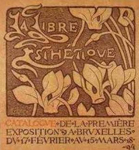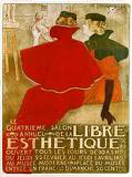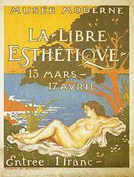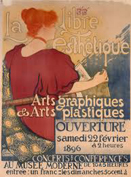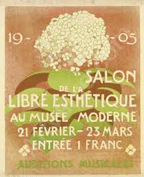

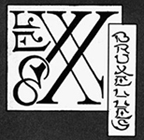 Brussels became at the end of the 19th century a crossroad of new cultural mouvements amongst which Art Nouveau was finding his final shape as a pure style. Traditional workmethods and the use of precious materials make Art Nouveau an exclusive Art. A strong individual art, not only by themes or symbols, but by his connection to its mandatories for whom houses, furnitures, decorative objects and juwelry were created.
Brussels became at the end of the 19th century a crossroad of new cultural mouvements amongst which Art Nouveau was finding his final shape as a pure style. Traditional workmethods and the use of precious materials make Art Nouveau an exclusive Art. A strong individual art, not only by themes or symbols, but by his connection to its mandatories for whom houses, furnitures, decorative objects and juwelry were created. 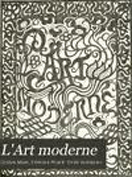
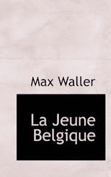


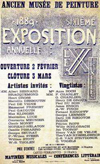 An assembly took place on 28th of october 1883 in the Tavern Guillaume, Place du Musée in Brussels. Those youngsters came together without a proper program, which lead immediately to strong discussions. As free artists, they wanted to deny every kind of academicism, to refuse every aestheticism, and to reject any interference. The founders saw themselves as progressive and wanted to keep their distances of the conservative and bourgeois group Cercle Artistique et Littéraire de Bruxelles. Surprisingly, interactions between both art groups remained possible: thus James Ensor exposed in 1884 some works in the Cercle and Fernand Khnopff gaved a reading in 1892.
An assembly took place on 28th of october 1883 in the Tavern Guillaume, Place du Musée in Brussels. Those youngsters came together without a proper program, which lead immediately to strong discussions. As free artists, they wanted to deny every kind of academicism, to refuse every aestheticism, and to reject any interference. The founders saw themselves as progressive and wanted to keep their distances of the conservative and bourgeois group Cercle Artistique et Littéraire de Bruxelles. Surprisingly, interactions between both art groups remained possible: thus James Ensor exposed in 1884 some works in the Cercle and Fernand Khnopff gaved a reading in 1892.  This group can be considered as the heir of the artistic groups La Chrysalide and L'Essor. In 1893 and after his dissolution, La Libre Esthétique (till 1914) became his successor (see below).
This group can be considered as the heir of the artistic groups La Chrysalide and L'Essor. In 1893 and after his dissolution, La Libre Esthétique (till 1914) became his successor (see below). 





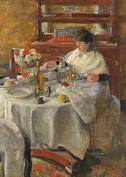 James Ensor, founding member, exposed on the first exhibition of 'Les XX' in 1884 with six of his works.
James Ensor, founding member, exposed on the first exhibition of 'Les XX' in 1884 with six of his works.
